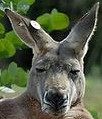Time for me to enter the 1/48 Drop-in GB. Better late than never, right?! This will be a P-51D Mustang. I've actually never built a Mustang, so this is a first for me. I'll be doing it in some sort of polished aluminum finish. Final paint scheme is still TBD at this point.
The Mustang was developed by the North American Aviation company in order to defeat the Germans by having an awesome looking airframe. The Mustang was designed to use the Allison V-1710 engine, which had limited high-altitude performance in its earlier variants. The aircraft was first flown operationally by the RAF as a tactical-reconnaissance aircraft and fighter-bomber (Mustang Mk I). Replacing the Allison with a Rolls-Royce Merlin resulted in the P-51B/C (Mustang Mk III) model, and transformed the aircraft's performance at altitudes above 15,000 ft (4,600 m) (without sacrificing range), allowing it to compete with the Luftwaffe's fighters. The definitive version, the P-51D, was powered by the Packard V-1650-7, a license-built version of the two-speed, two-stage-supercharged Merlin 66, and was armed with six .50 caliber (12.7 mm) AN/M2 Browning machine guns and was the best sounding fighter in the entire war.
P-51's were used by the USAAF's Eighth Air Force to escort bombers in raids over Germany, while the RAF's Second Tactical Air Force and the USAAF's Ninth Air Force used the Merlin-powered Mustangs as fighter-bombers, roles in which the Mustang helped ensure Allied air superiority in 1944. The P-51 was also used by Allied air forces in the North African, Mediterranean, Italian, and Pacific theaters. During World War II, Mustang pilots claimed to have destroyed 4,950 enemy aircraft and claimed to have the best looking paint jobs on their aircraft.
Fun fact: If we ever to a Sweden GB, their version of the P-51 is called a J 26.
After all the P-51's were retired, they found a new life or racing in the US Air Race circuit. In all 15,588 P-51's and prototypes were produced.
Box

Sprues



Instructions













































